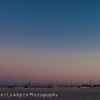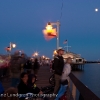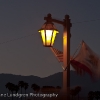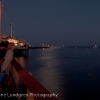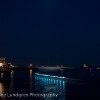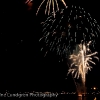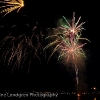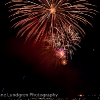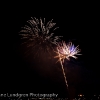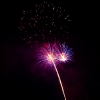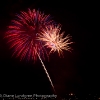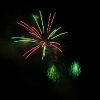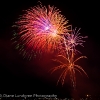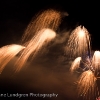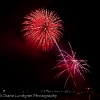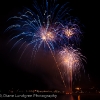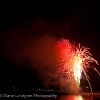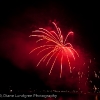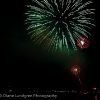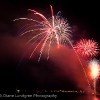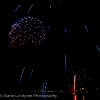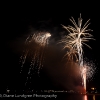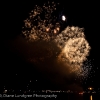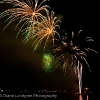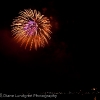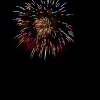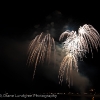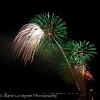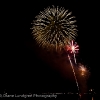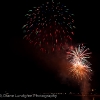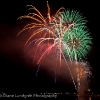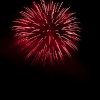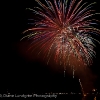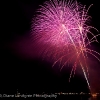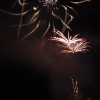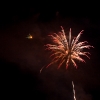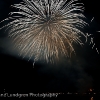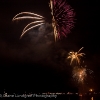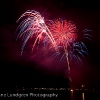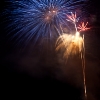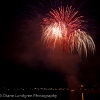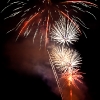HAPPY 4TH OF JULY
. . . . . to everyone who reads this !
What other images could I post here except fireworks! First allow me to post a composite of a fireworks display I shot in 2007 on Kauai. It was a small private fireworks display that I was fortunate enough to be invited to with some very,very dear friends.

2007 Kauai Fireworks Composite
Pretty cool, isn’t it? Now let’s get to present day, so you can do this too!
In the 5 years I have lived in Santa Barbara, I have never even attempted to go to where I could watch the fireworks – I didn’t want to fight the traffic or the crowds. But this year I decided I wanted to shoot the fireworks and crowds and traffic didn’t matter. In the end, when all the parking and walking were done, it really didn’t matter – even though I parked 2 miles away from Stearn’s Wharf, where I eventually ended up shooting from. And the walk was all down hill getting there, which means it was all uphill going back!! That one hurt a bit, but it was a great means of letting me know how out of shape I am! Isn’t that what we all want to be reminded of when we are having fun?
The first images are prep and set up. I fired off about 10 shots to check camera settings and play while I was waiting for the festivities to begin.
PREP IMAGES
What do I mean that it can’t keep up with me? The fastest writing speed CF Card doesn’t matter when the camera can’t write the information to it fast enough to be ready for the next shot. And when fireworks are launched, I can’t tell them to wait until my camera is ready! So, while the camera was writing to the card, I could not fire the shutter! I had no idea when the camera was busy or when it was ready to go, as it’s thinking light was on almost constantly. Amazingly enough, out of the 107 images, about 20 were missed timing shots due to this slowness in response time of the camera! Overall, I was very happy with the results from the evening.
A LITTLE HOW-TO WHEN SHOOTING FIREWORKS
There is a rhythm to shooting fireworks, as most of you know – you hear the boom of the rocket leaving the launch tube, wait a few seconds, and then the visual burst and display begins, lasting any where from 2 seconds to 10 seconds. Your job as the photographer is to be ready, count, and be ready for the next one . . .
EQUIPMENT
How are you going to be ready? There are some things that are a must when shooting fireworks, and a good steady tripod is one of them, a cable release comes second (this will prevent camera shake and allow you timing adjustment for longer exposures). The ability to set your camera to manual exposure with a ‘bulb’ setting is preferred, though cameras that have manual exposures where you can set the exposure to 1 or 2 seconds will work just as well.
ORIENTATION AND LENS CHOICE
The next thing to determine, if you know where the approximate launch site and direction of fire the rockets will be launched into, is camera orientation and lens choice. Some people I know use a vertical orientation for their shooting, my preference is a horizontal (landscape) orientation of the camera because of the spread of the display. Lens type will vary depending on how far away from the launch site you have positioned yourself. For example, the first several shots I fired off tonight, were shot with a 24-70mm lens, set at 24mm – this wasn’t wide enough! It didn’t take me very long to realize this and immediately change to a 16-35mm lens, set at 16mm. But I was very very close to the launch site and the displays! Sometimes you need to take into account wind direction, and tonight the displays were coming directly at me – this was totally awesome, by the way, but it caused me to back out on my angle of view quite a bit.
EXPOSURE
You have your camera mounted on a tripod with the shutter being released manually by you. You have the camera orientation and lens chosen, now let’s talk about exposure and focus. Manual exposure is best here, with a ‘bulb’ setting preference so you can control the timing of the exposure (shutter speed). As I mentioned earlier, however, if there is no bulb setting on your camera, a 1-2 second exposure will work great: 2 seconds is better than 1 second because you will get more trails and light. It would stand to reason then, if 2 seconds is good, then 3 or 4 seconds will work also – and you are right in this thinking. You may have to play with this, except unless you know your camera really well and can make those adjustments on the fly, setting up before hand is optimal so you don’t have to risk the chance of missing anything during the show – firework shows only last between 15 and 20 minutes at the longest – this is kamikaze (fast, furious and suicidal) shooting at its finest, so the least you have to adjust during, the better.
If you have the ability to set your camera’s ISO, the best settings for shooting fireworks is ISO 100 or lower, ISO 50 being the lowest most cameras will allow you to set this function to. WHY? Because there is much less digital noise at lower ISO settings, and the last thing you want is digital noise in the dark areas of your shots. And let’s face it, most of the image will be darkness (night time)!
Aperture settings are a subjective choice, but typically fireworks are shot at f/8 or f/11. Does this mean you have to shot at this setting? Absolutely not! For me, I want as much depth of field as possible. That said, at a 16mm focal length and 500ft distance from the subject, what is my depth of field shooting f/2.8 for this lens? Did I bring my little lens manual with me to know this? I am thinking – NOT! Do I know it off the top of my head? NOT! Am I going to play with it to find out? NOT! Does it even matter? Probably not! So just trust me on this one . . I got my information from others that have done this way more than I have, chose f/8 or f/11 – be safe.
Here is a good rule-of-thumb to follow: if your are shooting at 1 second, chose f/5.6 or f/8; if you chose 2 second exposures, set your aperture to f/8, maybe f/11; if you are at 2+seconds (adjusting through your rhythm and ‘bulb’ control), set your aperture to f/8, f/11. and maybe f/16. Just remember – aperture combined with shutter speed control the amount of light that hits the film plane (digital sensor): not enough light and your fireworks will be dim trails, too much light and you blow things out (over expose).
Another good thing to keep in mind is what you are exposing for. The fireworks themselves are intense points of light and little needs to be done to expose for them. Your shutter speed is controlling the ambient light in the scene, meaning it is what determines the length of the firework trail and any of the surrounding scene – so, the longer the shutter stays open, the more information gathers on your sensor and consequently, your image.
FOCUS
And now the last thing to adjust is your focus. This is really easy if you are close enough to the launch site and get to your position early enough to set up during daylight to test your focus points. But that isn’t going to help you when it gets dark and you have no idea of where the rockets will explode. The best rule-of-thumb is to set your lens’ focus to infinity and take it off ‘auto focus’. Please, Please, PLEASE take your lens off ‘auto focus’ ! ! ! Did I stress this enough? In the darkness, without a point of focus, your lens will never have the ability to get the focus set and be ready for the shot. To be very honest here, I don’t know if point-and-shoots have this ability or not, so this little how-to is aimed more at those who have cameras with the ability to replace lenses. Okay, your focus is now set to ‘infinity’, right?
READY ? GO !
You are ready to go! Feel the rhythm, get into the grove, stand back and enjoy the show, count and click! Don’t worry about chimping, don’t worry about what you got and changing anything during the show – count and click and hold, and . . . . . . . . . oooohh. . .h. . .h. . .h, aaaahh. . .h. . .h
IMAGES FROM THE NIGHT
A FEW LAST WORDS
These helpful hints will work whether you are shooting film or digital. The only recommendations I would make if your choice is film are as follows: choose ISO or ASA 100 speed film; use 36ct rolls versus 12ct (and if your camera has the ability to add a film back that holds more than 36 exposures – use it!), and have the same fun we digital shooters are having! Okay, maybe you might want 2 cameras ready to go instead of only one, that way when the 36 shots on the first camera are used, you don’t have to worry about removing the camera from the tripod and putting in a new roll of film.
As you may have noticed, there was a lot of smoke in some of the images I shot tonight. You really can’t get around this – Mother Nature does as she wishes, when she wishes – and sometimes her wishes are not perfectly aligned with our own. The longer I held the shutter open, the more smoke is revealed in the image; and similarly, the more intense the firework display, the more evident the smoke. If anyone knows how to get around this, aside from cloning it out in Photoshop (and paying someone beau koodles amount of money to do it!), please let me know.
